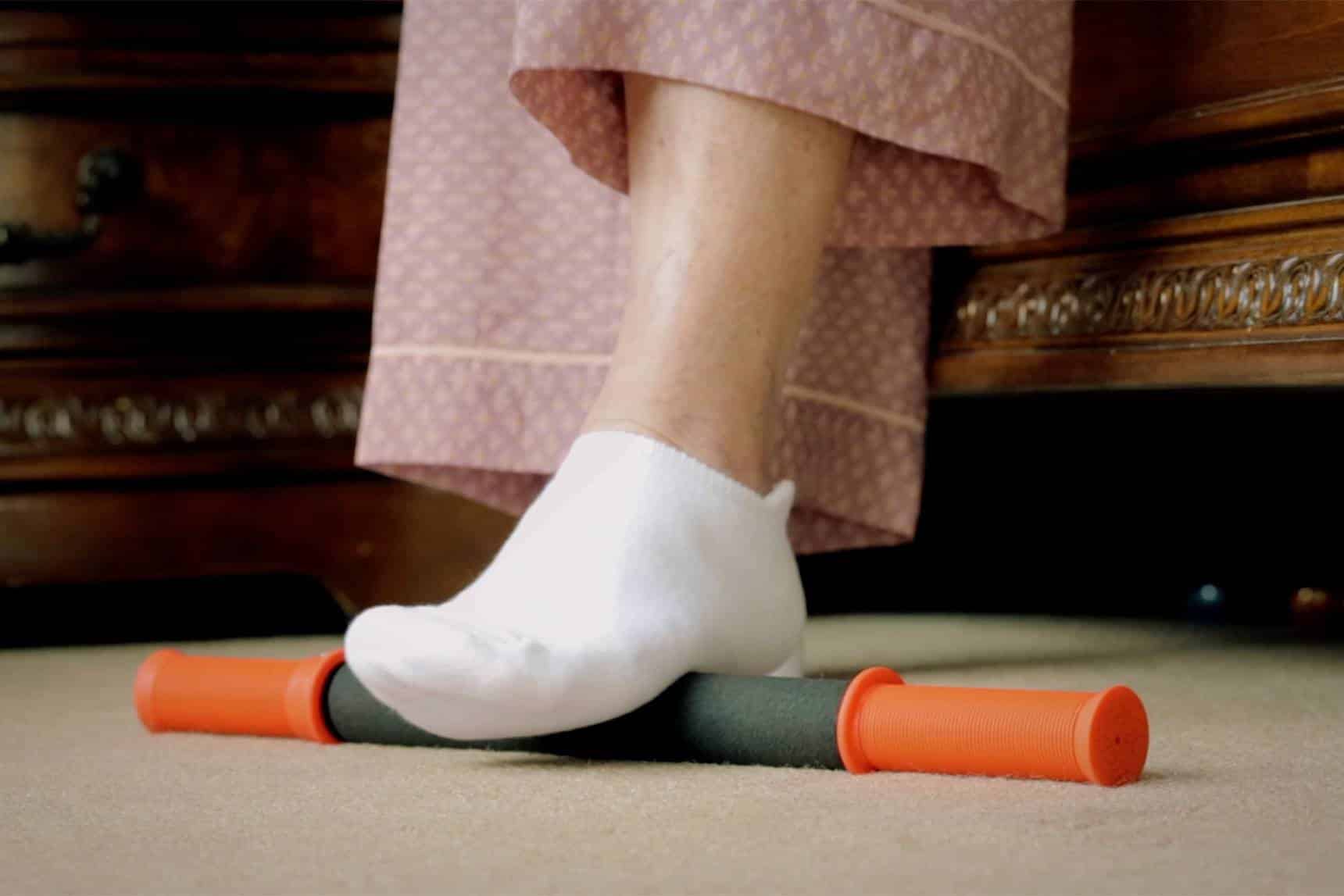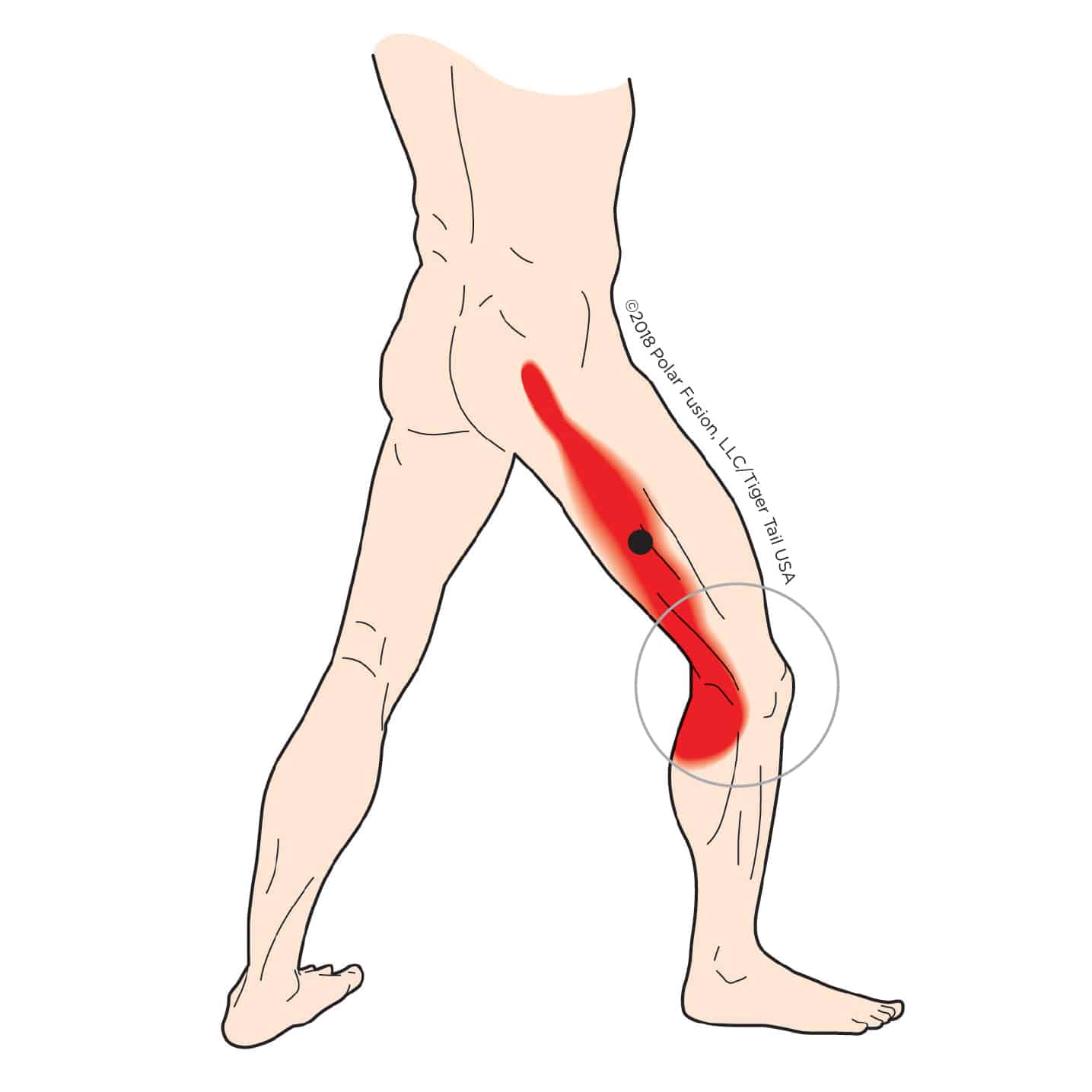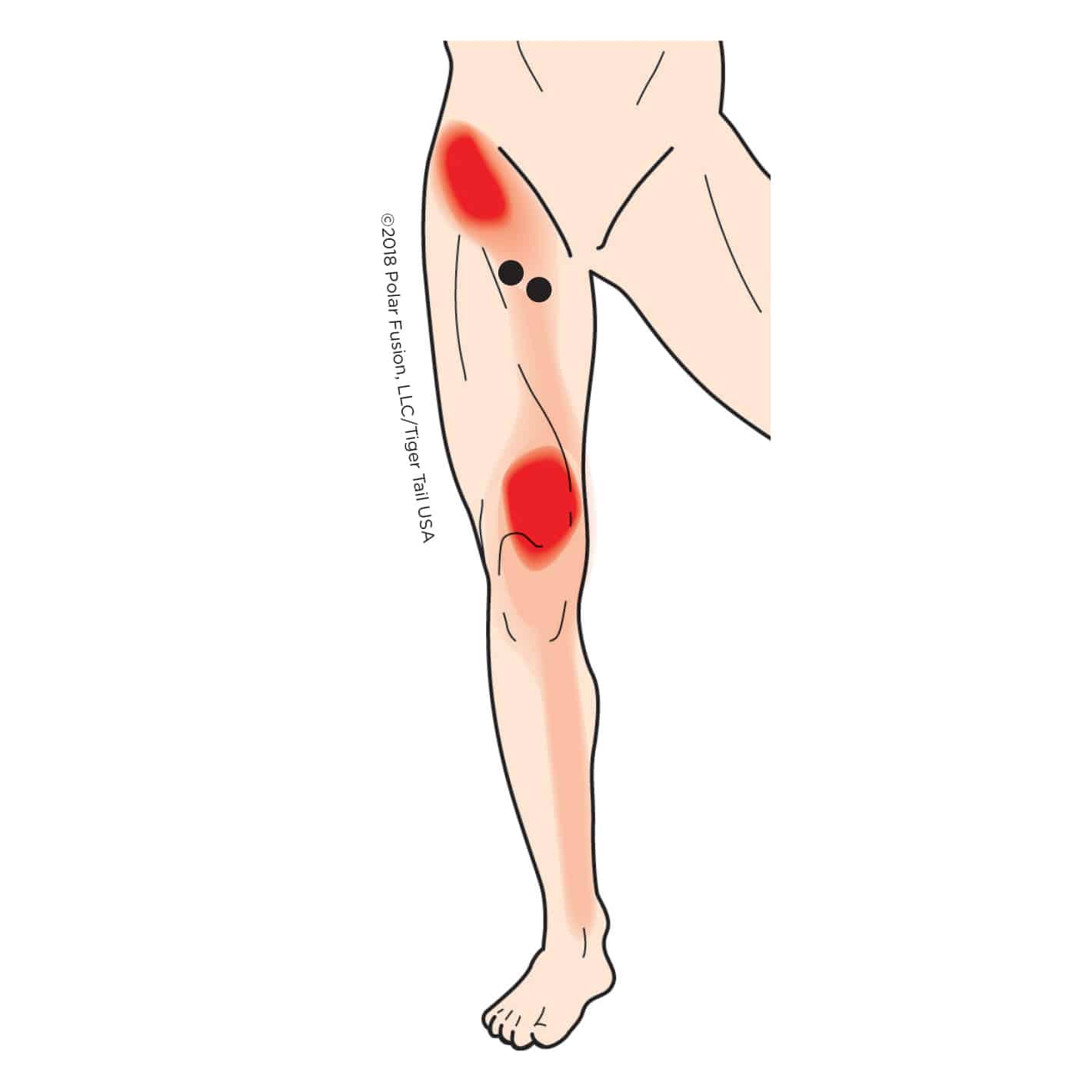
Various muscle knots can cause pain in the back, side, or front of the knee. Hamstring muscles, located in the back of the thigh, are responsible for extending the hip and bending or flexing the knee. Muscle knots in these muscles can cause pain in the back of the knee, as well as in the back of the thigh, the glutes, and the lower leg. Pain in the side of the knee is typically attributed to the IT Band. The IT Band is a thick band of connective tissue that runs along the outside of the leg from the hip to the outside of the knee. Muscle knots in the outside quadriceps muscle will cause outside knee pain.
Common muscle knots surrounding the knee, which consist of tight and contracted muscles, are indicated below by a black dot. The red area in the illustrations indicates “referred pain” – meaning, the pain you feel is often not in the location of your trigger point until you press on it. As an example, you may feel pain in the back of the knee, but the trigger point may actually be in the hamstring and calf muscles. For a comprehensive look at more than 260 different pain map illustrations throughout the body, you may want to purchase the Tiger Tail Self-Help Guide to HAPPY MUSCLES.

Knots in the Vastus Lateralis muscle, part of the hamstring group, can cause pain in the back of the knee.

Pain in the front of the knee may be attributed to muscle knots in the Adductor Brevis and Adductor Longus, located in the inner thigh.

Dr. Julie Zuleger has over 20 years of experience as a Licensed Massage Therapist, Certified Strength, and Conditioning Specialist (CSCS), Corrective Exercise Specialist, RYT-500 Yoga Instructor, and Human Movement Specialist. Julie promotes self-care using massage tools and stretching-based programs and teaches continuing education courses for yoga teachers, massage therapists, athletic trainers, strength and conditioning, fitness, and wellness professionals. Julie holds a PhD in Education and is the Director of Kinesiology and Education at Tiger Tail USA.
*Not applicable for shipping to Alaska and Hawaii
© 2024 Tiger Tail USA. All Rights Reserved.